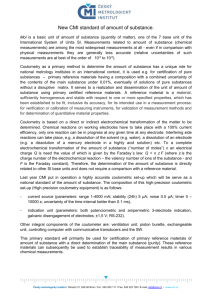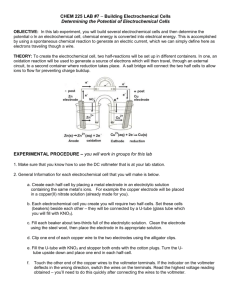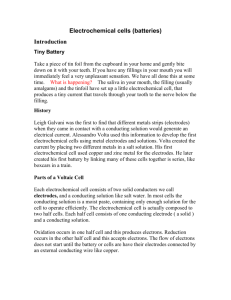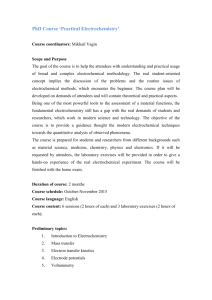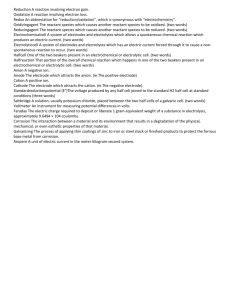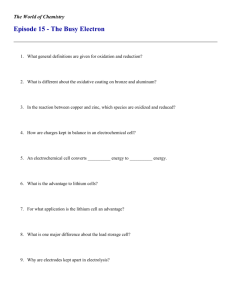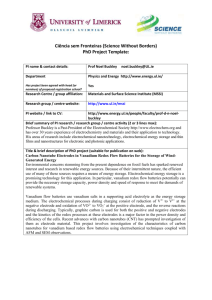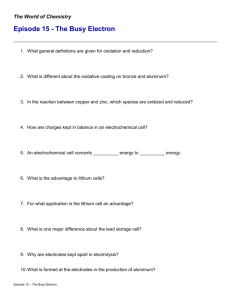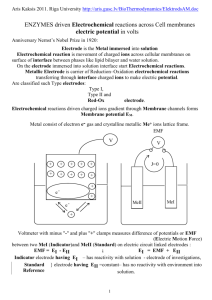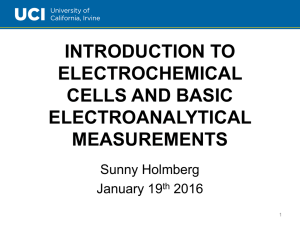abstract
advertisement
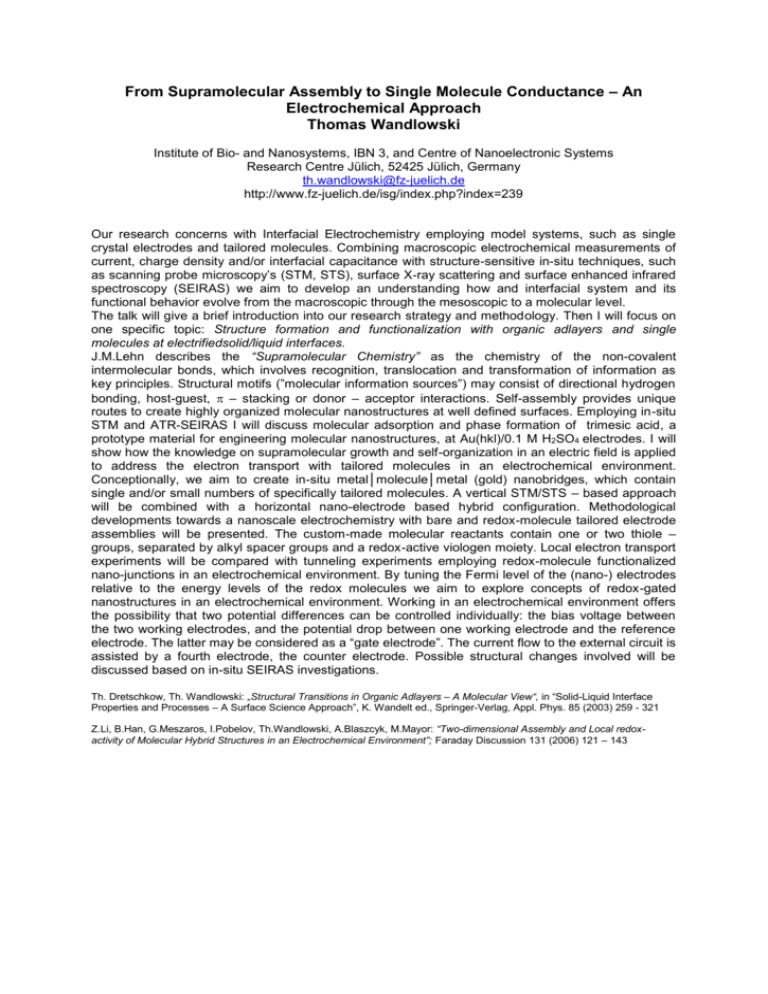
From Supramolecular Assembly to Single Molecule Conductance – An Electrochemical Approach Thomas Wandlowski Institute of Bio- and Nanosystems, IBN 3, and Centre of Nanoelectronic Systems Research Centre Jülich, 52425 Jülich, Germany th.wandlowski@fz-juelich.de http://www.fz-juelich.de/isg/index.php?index=239 Our research concerns with Interfacial Electrochemistry employing model systems, such as single crystal electrodes and tailored molecules. Combining macroscopic electrochemical measurements of current, charge density and/or interfacial capacitance with structure-sensitive in-situ techniques, such as scanning probe microscopy’s (STM, STS), surface X-ray scattering and surface enhanced infrared spectroscopy (SEIRAS) we aim to develop an understanding how and interfacial system and its functional behavior evolve from the macroscopic through the mesoscopic to a molecular level. The talk will give a brief introduction into our research strategy and methodology. Then I will focus on one specific topic: Structure formation and functionalization with organic adlayers and single molecules at electrifiedsolid/liquid interfaces. J.M.Lehn describes the “Supramolecular Chemistry” as the chemistry of the non-covalent intermolecular bonds, which involves recognition, translocation and transformation of information as key principles. Structural motifs (”molecular information sources”) may consist of directional hydrogen bonding, host-guest, – stacking or donor – acceptor interactions. Self-assembly provides unique routes to create highly organized molecular nanostructures at well defined surfaces. Employing in-situ STM and ATR-SEIRAS I will discuss molecular adsorption and phase formation of trimesic acid, a prototype material for engineering molecular nanostructures, at Au(hkl)/0.1 M H2SO4 electrodes. I will show how the knowledge on supramolecular growth and self-organization in an electric field is applied to address the electron transport with tailored molecules in an electrochemical environment. Conceptionally, we aim to create in-situ metal│molecule│metal (gold) nanobridges, which contain single and/or small numbers of specifically tailored molecules. A vertical STM/STS – based approach will be combined with a horizontal nano-electrode based hybrid configuration. Methodological developments towards a nanoscale electrochemistry with bare and redox-molecule tailored electrode assemblies will be presented. The custom-made molecular reactants contain one or two thiole – groups, separated by alkyl spacer groups and a redox-active viologen moiety. Local electron transport experiments will be compared with tunneling experiments employing redox-molecule functionalized nano-junctions in an electrochemical environment. By tuning the Fermi level of the (nano-) electrodes relative to the energy levels of the redox molecules we aim to explore concepts of redox-gated nanostructures in an electrochemical environment. Working in an electrochemical environment offers the possibility that two potential differences can be controlled individually: the bias voltage between the two working electrodes, and the potential drop between one working electrode and the reference electrode. The latter may be considered as a “gate electrode”. The current flow to the external circuit is assisted by a fourth electrode, the counter electrode. Possible structural changes involved will be discussed based on in-situ SEIRAS investigations. Th. Dretschkow, Th. Wandlowski: „Structural Transitions in Organic Adlayers – A Molecular View“, in “Solid-Liquid Interface Properties and Processes – A Surface Science Approach”, K. Wandelt ed., Springer-Verlag, Appl. Phys. 85 (2003) 259 - 321 Z.Li, B.Han, G.Meszaros, I.Pobelov, Th.Wandlowski, A.Blaszcyk, M.Mayor: “Two-dimensional Assembly and Local redoxactivity of Molecular Hybrid Structures in an Electrochemical Environment”; Faraday Discussion 131 (2006) 121 – 143
